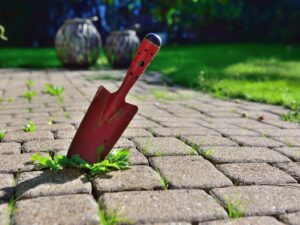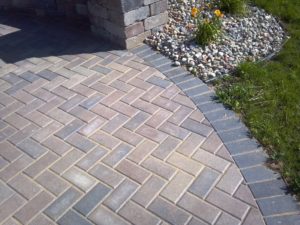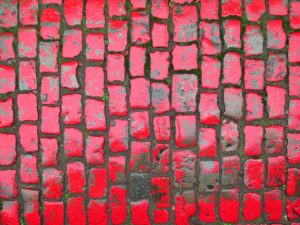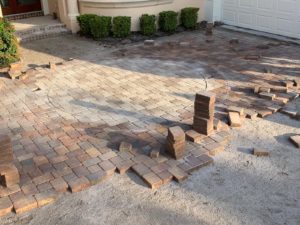When it comes to hardscaping projects, choosing the right base material is crucial for the longevity and stability of your floor. While ordinary sand is sometimes used, it’s essential to highlight the benefits of polymeric sand – which should be your go-to choice in any paver installation. After all, polymeric sand as a paver base has a huge cost-benefit behind it, hence its high demand on the market.
In this article, we will explore why this product is an excellent and durable investment, discussing alternative materials and providing a step-by-step guide on how to properly lay polymeric sand as a paver base by yourself.
Click here to read how to compact pavers without a plate compactor.
Why Use Polymeric Sand as a Paver Base
Polymeric sand is made up of a mixture between fine grains and specific additive particles. This special combination offers several advantages over ordinary sand, providing enhanced performance and longevity for your paver installation.
- Superior Bonding: Polymeric sand contains additives that activate with water, creating a strong bond between the pavers. This bond helps to prevent weed growth, insect infestation, and the shifting of individual pavers;
- Enhanced Stability: The binding properties of polymeric sand help to stabilize the paver joints, reducing the likelihood of erosion and movement. This stability ensures that your paver surface remains level and structurally sound over time;
- Improved Weed Control: The polymer additives in polymeric sand create a barrier that inhibits weed growth between the pavers. This reduces maintenance efforts and keeps your paver installation looking pristine.
Read as well: How to Cut Bricks by Hand – Complete Guide
Alternative Paver Base Materials
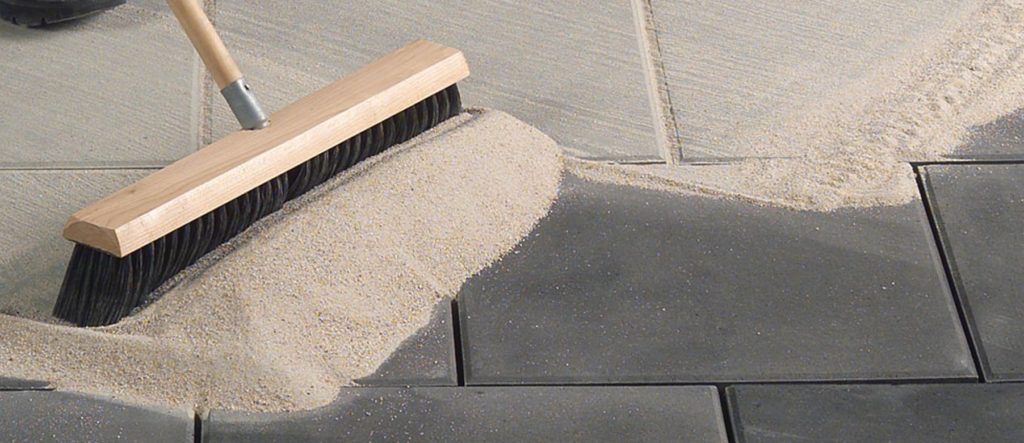
While polymeric sand is an excellent choice all the way through, it’s important to consider alternative base materials based on your specific project requirements. Here are some notable alternatives suggested by most paving experts (ourselves included):
- Crushed Stone: Crushed stone provides excellent stability and drainage, making it suitable for heavy-duty applications and areas with high water runoff.
- Recycled Concrete Aggregate: For eco-conscious builders, recycled concrete aggregate offers comparable strength and stability to traditional base materials while reducing waste.
- Stone Dust: Stone dust compacts well and helps fill gaps between pavers, preventing weed growth and promoting stability.
- Synthetic Base: Synthetic materials, such as plastic grids or panels, offer an innovative alternative to traditional base materials. They create a stable base and enhance water drainage.
How to Lay Polymeric Sand as a Paver Base
Proper installation of polymeric sand as a paver base is essential for optimal results. Follow these steps, while ensuring the necessary safety measures:
- Preparing the Site: Clear the area of vegetation, debris, and topsoil. Ensure proper site grading for adequate water drainage.
- Excavation: Dig a trench that accommodates the base material layers and the desired paver thickness. Include an additional allowance for polymeric sand.
- Soil Compaction: Use a plate compactor or tamper to evenly compact the soil. This step provides a stable foundation for the subsequent layers.
- Safety Measure: Before proceeding, ensure you wear appropriate personal protective equipment (PPE), including gloves, safety goggles, and sturdy footwear. You can rent all equipment at your nearest hardware store.
- Adding Base Material: Lay and compact the chosen base material (e.g., crushed stone, recycled concrete aggregate, or stone dust) according to the recommended thickness.
- Polymeric Sand Installation: Once the base material is in place, follow the manufacturer’s instructions for polymeric sand application. Sweep the sand into the joints, ensuring they are completely filled.
- Sand Activation: Gently mist water over the polymeric sand to activate the bonding agents. Avoid excessive water application, as it can affect the sand’s performance.
- Final Checks: Allow the polymeric sand to set according to the manufacturer’s instructions. Once cured, remove any excess sand and verify the levelness of the paver surface.
Don’t miss: Is It Possible to Lay Pavers Without Sand?
Conclusion
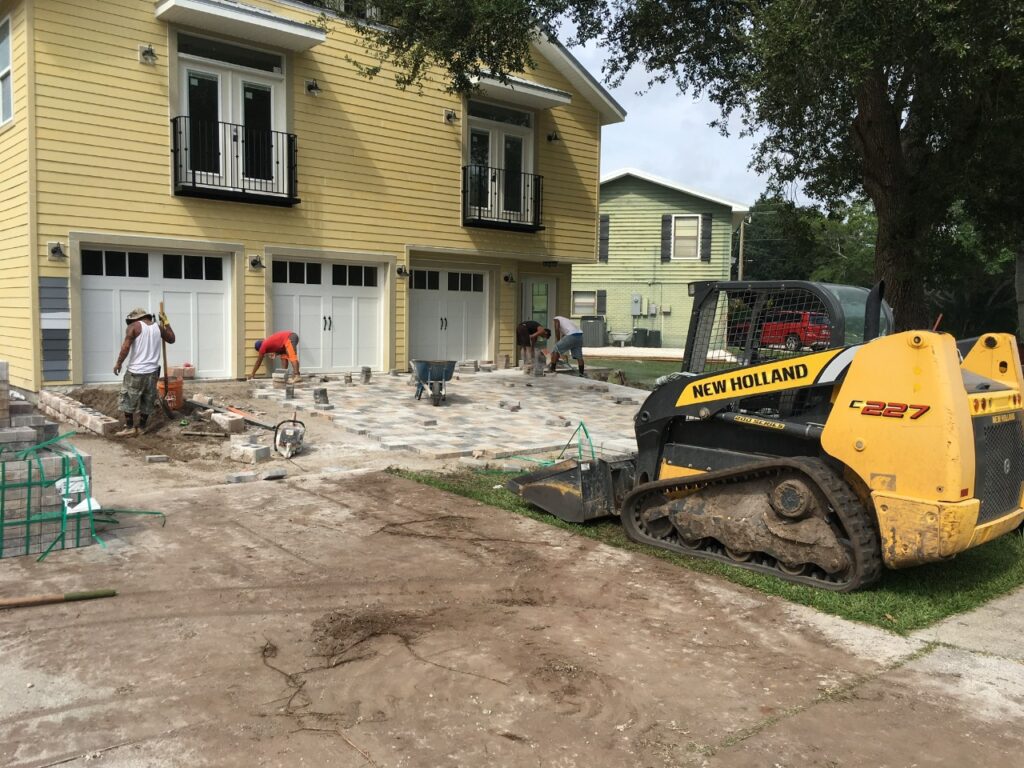
After that, you’re all done! Hopefully, now you can see how polymeric sand as a paver base offers significant advantages over ordinary materials, providing superior bonding, enhanced stability, and improved weed control. By using polymeric sand, you can ensure a long-lasting and visually appealing paver project!
Even so, sometimes it’s essential to consider alternative base materials such as crushed stone, recycled concrete aggregate, or stone dust based on your specific requirements and budget – because each material has its unique benefits and suitability.
Remember, though: if you have any doubts or need further guidance, consult with a professional contractor or refer to specific local building codes and regulations. Only by using polymeric sand correctly can you make the most out of your investment, which should stand the test of time without future compromises.
Speak to hardscaping professionals near you!
At the end of the day, DIY techniques are not always the best option – and all the complex logistics speak for themselves, even for something as simple as pouring sand.
Over 12 years in the hardscape business, our team has dealt with many homeowners in many different situations – and we know how tricky the whole installation process can be, from the base to the top. That’s why we always recommend hiring a professional in your area whom you can trust – so that they assist you with planning from the very beginning.
That said, if you happen to be around our area of activity, the Sarasota and Manatee counties, in Florida, why not give us a call to help you out? We can take your dream patio off the paper!
You can contact us any time for a free estimate of our services! Call us right now at 941-773-3098 or email us at sales@sspavers.com. We would be more than happy to help you with any hardscape needs you might have – including supply, installation, and maintenance services.

